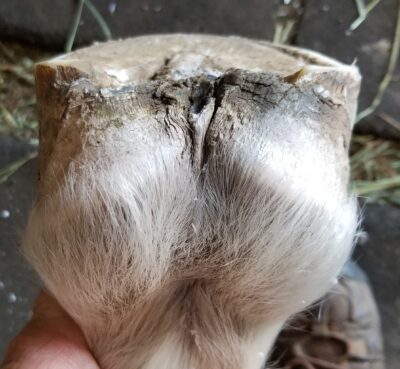default page
IS Media Presentation Guidelines
The Intermediate Studies Presentation is an important step in the Training Program. The goal of this presentation is to get you documenting your work and to prepare you for your Final Presentation, when the time comes.
If you haven’t been taking lots of hoof photos you can start now! For more tips on correct views and photo taking, check out Good Hoof Photos and How to Take Them.
It can seem like a difficult task to get the ‘perfect’ photos. With practice it gets easier. We all see things in our photos that are less than perfect and we didn’t notice in the field. If you see some little things you wish you did differently or you missed something, just make a note of it in the comments on that picture. If you are seeing a lot of things you wish you did differently, you should use a different case study to represent your work.
We expect the IS Presentation to be a learning experience for you. The Evaluation Committee is here to teach and support you, not just to judge your work. You will receive a detailed summary from the committee members containing positive feedback as well as suggestions for future presentations. No one fails out of the program here. Our goal at PHCP is to support and educate our members.
PHOTO GUIDELINES
Complete before and after hoof photos of a maintenance trim on one horse. This is a horse you have been trimming long enough to correct most issues, such as thrush and flares. It is a relatively balanced hoof with no major pathologies. You trim this horse on a regular appropriate schedule and keep any minor imbalances in check without having to remove a lot of material.
- Photos must be clear and sharp, using natural lighting.
- The dorsal and lateral views must be taken at ground level and all photos should be taken up close, at the correct angle.
- Hoof photos will include the views shown below, of all 4 feet, before and after the trim. Photos must be oriented in the same way as the pictures below.
- Include a full body shot, taken from the side of the horse, before and after the trim.
- Label each photo as before trim = BT or after trim = AT, with the hoof location. right front = RF, left front = LF, right hind = RH, left hind = LH. example: before trim on the right front is BT/RF
- Photo should be organized with the before trim photo followed by the after trim photo of each view, on each hoof. If collage photos are used there should be no more than 2 photos (the before and after) in each collage.
- Comments must accompany the photos and are an important part of the presentation. Tell us about this horse. Include its breed, age, history, diet, lifestyle, and anything else you may have considered when planning your trim. These details and comments on individual photos may be posted in your smugmug gallery.
Please read through the SmugMug Upload and Edit Instructions before you begin uploading your photos.
TRIM GUIDELINES
Frog
Trimmed for hygienic purposes only where necessary to keep the central sulcus open and clean up flaps and tags which could harbor bacteria. The environment must be considered.
Sole
Remove shedding material only when necessary to balance the hoof and when the sole is not already too thin.
Bars
Tapered smoothly to the sole plane from the heels with no lumps or high area pressure points that would make primary ground contact. Overgrown laid over bar material should be removed or thinned around the frog if caudal health and sole depth allow.
Heels
Balanced to the collateral grooves and the limb as possible. Lowered and brought back to create a clear landing zone. Internal structural development and frog health must be considered when deciding on heel height.
Toes
Brought back to create the proper break over in relation to internal structures. Sole depth and the presence of lamellar wedge must be taken into consideration when determining optimal break over of the hoof on that day.
Roll / Bevel
Should be smooth and with an even height corresponding to the coronet growth above. The roll should be functional so that the horse can break over easily and wear the hoof evenly throughout the trim cycle.
Overall impression
The hoof should give the impression of having been done by a professional with attention given to the quality of work. There should be no rough nipper, rasp or knife marks.
If you did not follow the trim guidelines, clearly explain why. Part of what the evaluation committee is looking for is a good understanding of how you approached the trim on that hoof. If you see something you would have done differently, if you could have a ‘do over’, please express this. Trimmers are only human, and sometimes things appear differently in a photo than when we are in the moment with the hoof in hand. Carefully detail your considerations with regards to diet, lifestyle, booting, etc.
Full Body shot
position the camera perpendicular to the withers/barrel and on the same elevation as the horse
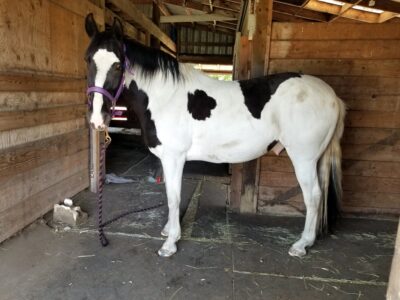
Dorsal view
position the camera on the ground and perpendicular to the center of the hoof
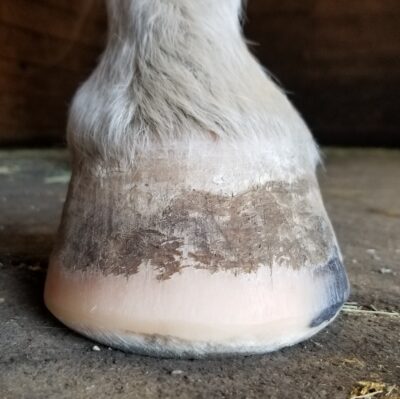
Lateral view
position the camera on the ground line up the heel bulbs to make sure you are truly perpendicular to the hoof

Solar view
point your camera perpendicular to and directly above the sole
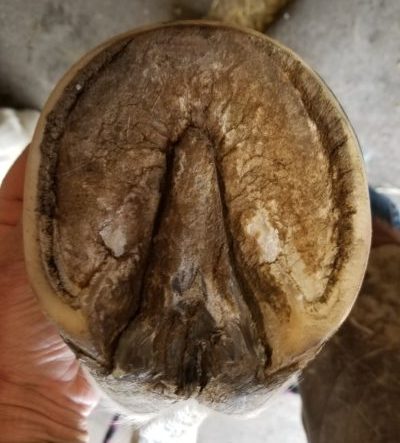
Oblique view
this view is shot from the lateral heel across the medial toe, it should be at a high enough angle to see the whole sole, but low enough to see the depth of concavity
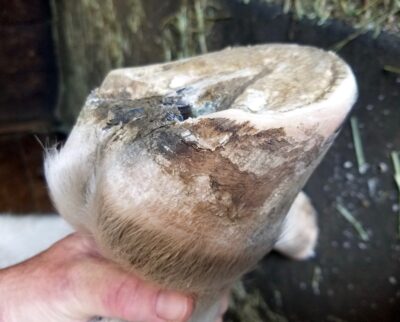
Caudal view
take this view just like you are checking the balance and looking for any high spots
